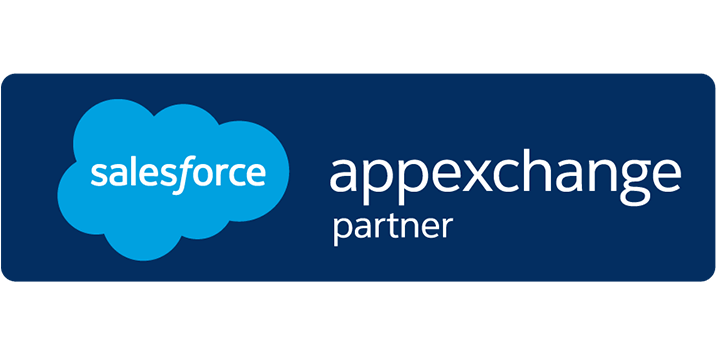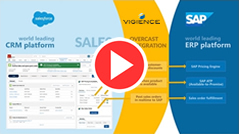Business Process Insights
Integrated field service with Salesforce, SAP, and Overcast
Field service management is a crucial aspect of businesses today, especially in industries like construction, maintenance, repair, and utilities. With the advent of technology, businesses can now access powerful solutions from platforms like Salesforce and SAP to improve their field service management operations, allowing organizations to streamline processes, increase efficiency, and boost productivity.
Salesforce
Salesforce is a customer relationship management (CRM) platform that is widely used in the field service industry. It provides businesses with the ability to manage customer interactions, automate sales and marketing processes, and improve collaboration between departments. Through a field service solution called “Service Cloud,” core service processes have been optimized by integrating ClickSchedule, a field service product Salesforce acquired in 2019.
SAP
SAP is the leading enterprise resource planning (ERP) platform that enables businesses to manage their financial and operational data. It comes with a module called “Customer Service (CS)” that offers a tight integration between production planning, billing, finances, and asset management.
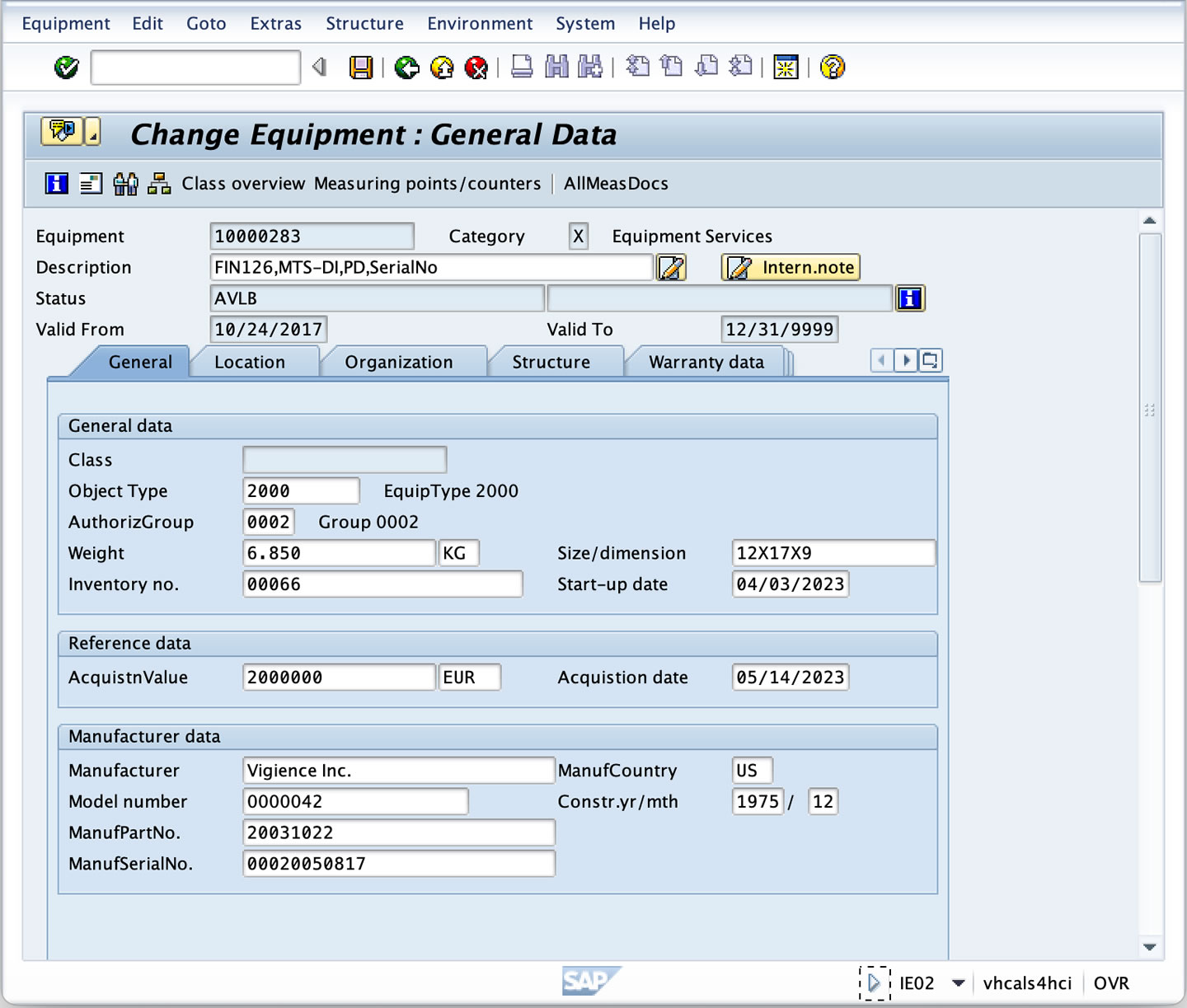 SAP GUI, transaction IE02 – Edit Equipment
SAP GUI, transaction IE02 – Edit Equipment
SAP’s strength is its ability to customize every aspect of the service module to customer needs, with functionality that is far more advanced than what Salesforce offers.
SAP acquired CoreSystems and integrated its cloud solution into its product portfolio. The SAP Field Service Management (FSM) solution is running on the SAP Business Technology Platform (BTP) and will replace the CS module in the future. FSM—just like CS—offers an integration into the core processes of S/4HANA and SAP ERP, but is not as flexible and customizable as CS.
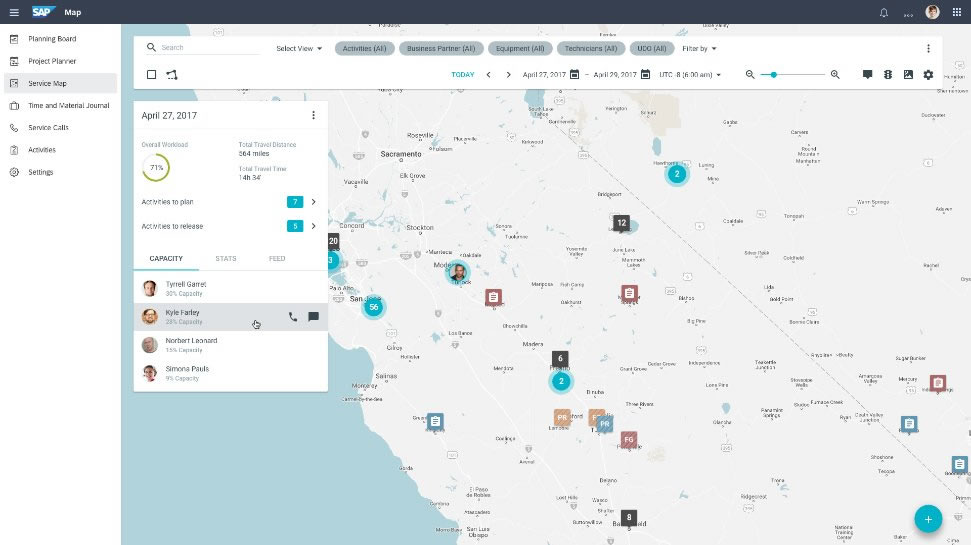 SAP Field Service Management
SAP Field Service Management
While SAP offers more functionality (at least in SAP CS), Salesforce has a more advanced user experience (UX) and solutions that are much easier to extend to customer needs than CS or FSM.
Migration to FSM or Salesforce?
Because SAP is no longer investing in the CS module and no new features are expected in the future, many organizations are looking to replace it with a newer, more modern solution. SAP FSM and the Salesforce Service Cloud are two logical candidates.
At the same time, companies need integrated solutions so that the double entry of data can be avoided and users can work within one user experience, without the need to switch between systems.
Many organizations select the Salesforce Service Cloud as their frontend system (system of engagement) because it offers more functionality and a more mature, user-friendly solution relative to FSM.
Let’s quickly look at the FSM to S/4HANA integration and compare it to the integration of Salesforce with SAP.
Integrating FSM with S/4HANA
SAP offers a prepackaged FSM integration into S/4HANA and SAP ERP, a solution that is based on the SAP Cloud Integration (CI) and limited to data replication between systems. The integration is rather complex, as configuration needs to be done on the FSM, CI, and ERP sides. You can find a detailed guide to this integration process here
Integrating Salesforce Service Cloud with S/4HANA
The integration of Salesforce and SAP allows businesses to leverage the strengths of both platforms, creating a comprehensive solution for field service management. However, Salesforce and SAP don’t offer a native integration between their systems. Depending on who you ask, MuleSoft or SAP CI might be your recommended integration platform — both provide templates and tools to get started, but not a complete, ready-to-use solution.
That’s why we recommend combining MuleSoft with Vigience Overcast. MuleSoft offers a powerful and flexible integration layer, while Overcast adds the business-ready logic and pre-defined process integrations needed to connect Salesforce and SAP out of the box. This combination accelerates delivery, reduces complexity, and ensures deep end-to-end integration across systems.
Vigience Overcast includes more than 150 pre-defined integrations that meet the needs of small and midsize companies as well as large enterprises. These include ready-to-use solutions for SAP Materials and Products, Functional Locations and Equipment (including Characteristics and Product Hierarchies), Attachments (GOS, ArchiveLink, DMS), Time and Material Confirmations, Service and Work Orders (including operations, components, and business partners), and real-time SAP Pricing and Availability/ATP Checks.
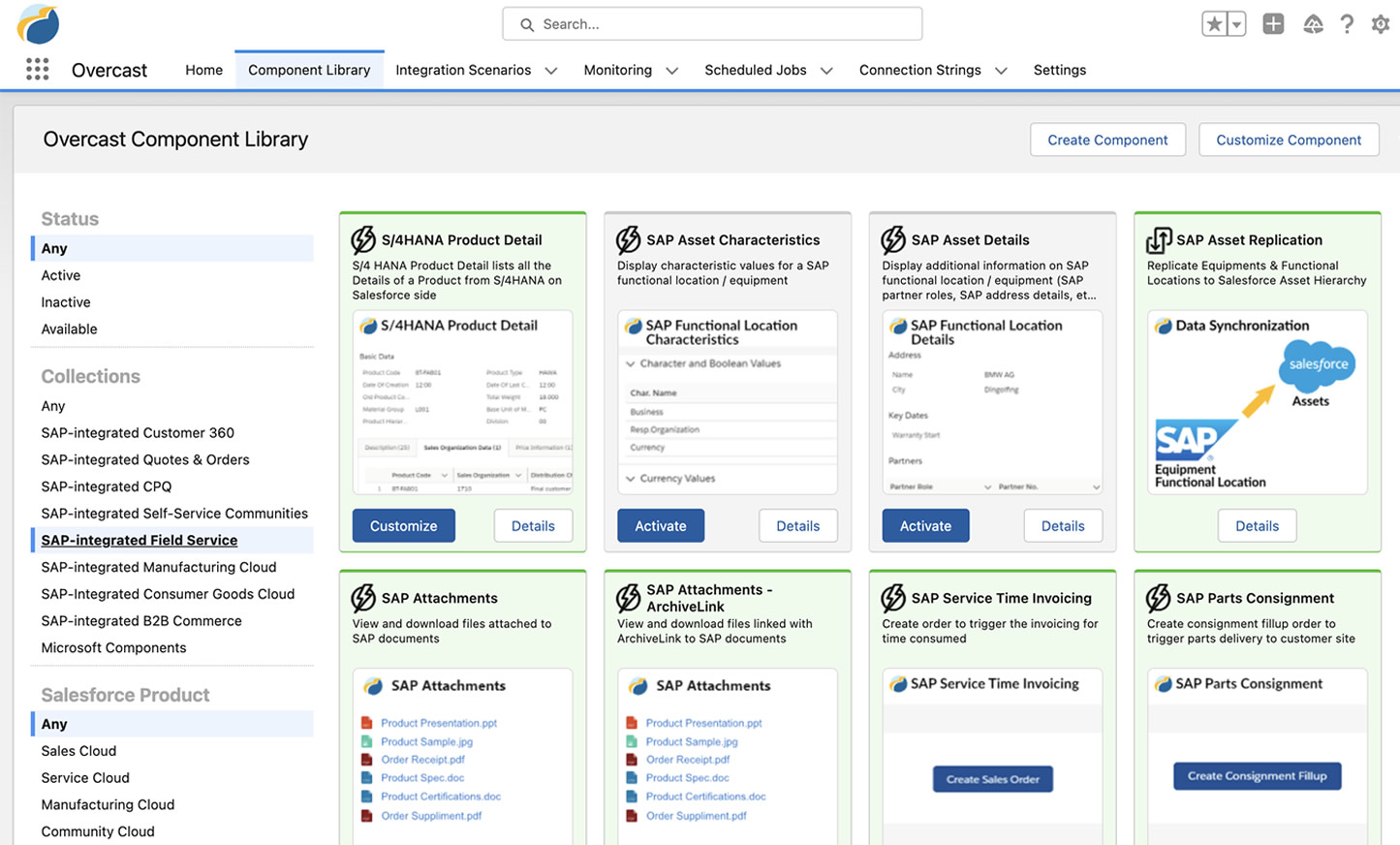
The Field Service applications in the Overcast Component Library
While platforms like MuleSoft and SAP CI provide excellent integration frameworks, Vigience Overcast delivers application-level depth that goes far beyond template-based approaches — even exceeding the native integration between SAP FSM and S/4HANA. Together, Overcast and MuleSoft provide a scalable, enterprise-grade integration stack for organizations that need more than just connectivity.
Unlike solutions that rely entirely on data replication, Overcast also supports real-time SAP data integration directly into the Salesforce Service Cloud user interface. This allows users to access live SAP data — such as customer records, service history, billing, and asset information — without leaving Salesforce.
With Overcast and MuleSoft working together, companies can unify their field service operations end-to-end: managing customer interactions, dispatching service technicians, and maintaining accurate master data and transactional records across both systems. The result is a seamless experience for both service agents and customers, with real-time insights and faster response times.
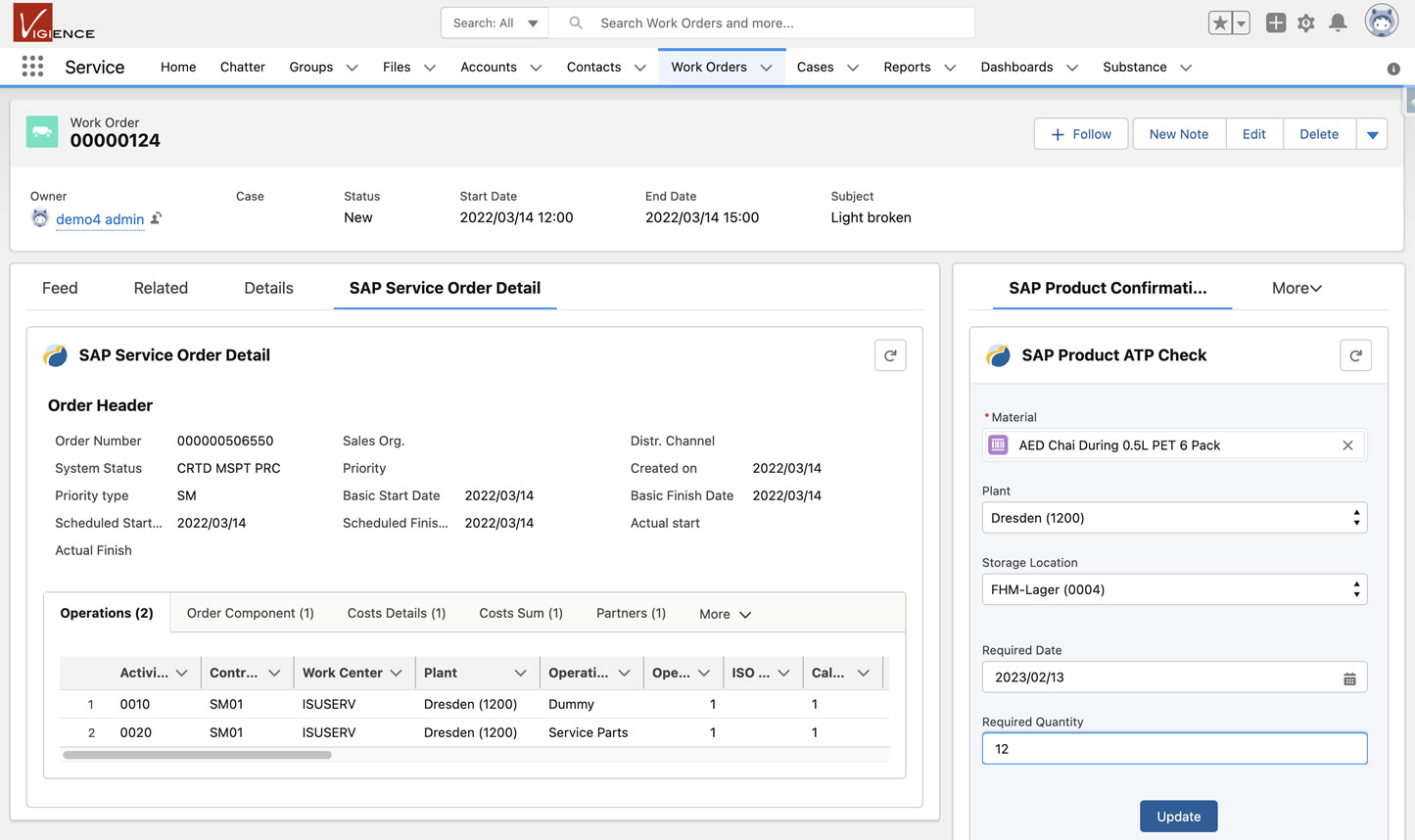
A Salesforce Work Order with data from SAP, including ATP check
One of the biggest benefits of integrating Salesforce and SAP is the ability to streamline the dispatch process. Service technicians can access all customer information and service history directly from their mobile devices, eliminating the need for manual processes and reducing the time it takes to complete a job. This improved dispatch process results in increased efficiency and improved customer satisfaction, as technicians are better equipped to handle customer requests.
Another key benefit of this integration is the ability to automate billing and invoicing processes. With real-time access to SAP data, businesses can generate invoices as soon as a job is completed, eliminating the need for manual processes and reducing the time it takes to get paid. This automation not only saves time, but also helps businesses to reduce errors and improve accuracy in their billing and invoicing processes.
In addition, the integration of Salesforce and SAP enables businesses to better track and manage their field service operations. With real-time data and analytics, businesses can gain insights into their operations, including service level agreements, job completion times, and technician productivity. This information can then be used to make informed decisions and improvements to their field service operations.
Conclusion
The integration of Salesforce and SAP provides businesses with a comprehensive solution for field service management. By leveraging the strengths of both platforms, businesses can streamline their dispatch processes, automate billing and invoicing, and gain insights into their operations. This integration can result in increased efficiency, improved customer satisfaction, and a boost in productivity, making it a must-have for businesses in the field service industry. Overcast is an important piece of this equation, helping you implement your integration in a matter of days.
If you want to learn more about the possibilities Vigience Overcast provides, or if you have questions about integrations and field service management, please reach out to us or subscribe to our newsletter.
AUTHOR

Alexander Ilg

